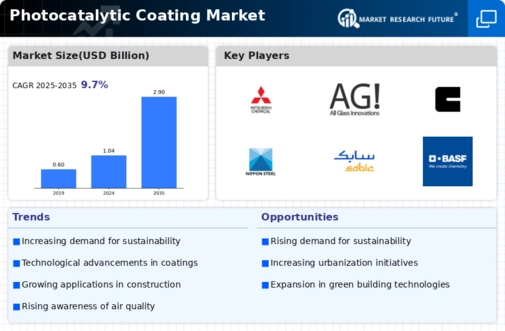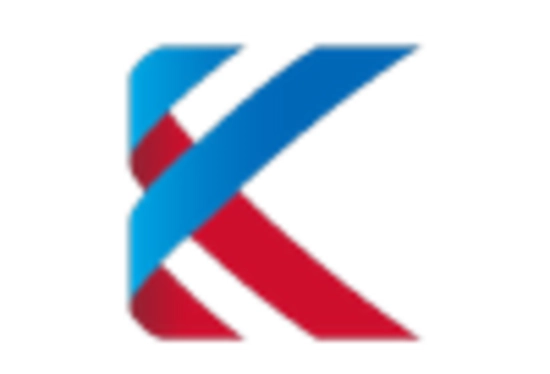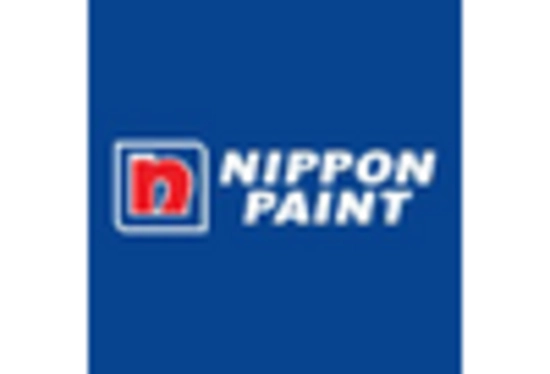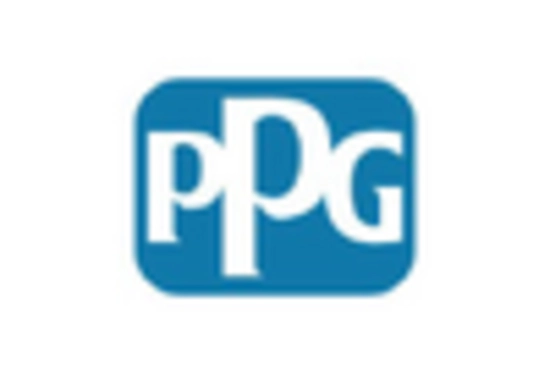Expansion of Application Sectors
The Photocatalytic Coating Market is witnessing an expansion in application sectors, which is driving its growth. Initially utilized primarily in construction and automotive industries, photocatalytic coatings are now finding applications in diverse fields such as textiles, electronics, and healthcare. This diversification is largely attributed to the unique properties of photocatalytic coatings, which offer benefits such as self-cleaning surfaces and antimicrobial effects. For instance, the healthcare sector is increasingly adopting these coatings to create sterile environments, while the textile industry is exploring their use for stain-resistant fabrics. Market analysts predict that the expansion into new sectors could lead to a market valuation exceeding USD 3 billion by 2030. As industries recognize the multifunctional advantages of photocatalytic coatings, the Photocatalytic Coating Market is likely to continue its upward trajectory.
Rising Awareness of Indoor Air Quality
The growing awareness of indoor air quality is emerging as a crucial driver for the Photocatalytic Coating Market. As individuals become more conscious of the health implications associated with poor indoor air quality, there is a rising demand for solutions that can effectively purify the air. Photocatalytic coatings, which can decompose indoor pollutants and allergens, are increasingly being recognized as viable options for improving air quality in residential and commercial spaces. Market Research Future indicates that the demand for such coatings is expected to rise, with projections suggesting a market growth rate of around 12% annually. This trend is likely to be further supported by the increasing integration of photocatalytic coatings in HVAC systems and building materials, thereby enhancing their application scope within the Photocatalytic Coating Market.
Increasing Demand for Eco-Friendly Solutions
The Photocatalytic Coating Market is experiencing a notable surge in demand for eco-friendly solutions. As environmental concerns escalate, consumers and industries alike are gravitating towards sustainable products. Photocatalytic coatings, known for their ability to decompose organic pollutants and reduce harmful emissions, align well with this trend. The market is projected to grow at a compound annual growth rate of approximately 15% over the next five years, driven by the increasing adoption of green technologies. This growth is further fueled by government initiatives promoting sustainable practices, which encourage the use of photocatalytic coatings in various applications, including construction and automotive sectors. As awareness of environmental issues continues to rise, the Photocatalytic Coating Market is likely to expand, offering innovative solutions that contribute to a cleaner and healthier environment.
Regulatory Support for Environmental Standards
The Photocatalytic Coating Market is significantly influenced by regulatory frameworks aimed at enhancing environmental standards. Governments worldwide are implementing stringent regulations to curb air pollution and promote sustainable practices. These regulations often mandate the use of advanced materials, including photocatalytic coatings, in construction and manufacturing processes. For example, certain regions have introduced incentives for industries that adopt eco-friendly technologies, thereby boosting the demand for photocatalytic coatings. The market is expected to benefit from these regulatory measures, as they create a favorable environment for the adoption of photocatalytic solutions. With an anticipated increase in regulatory support, the Photocatalytic Coating Market is likely to witness accelerated growth, as businesses seek compliance while enhancing their sustainability profiles.
Technological Innovations in Coating Applications
Technological advancements play a pivotal role in shaping the Photocatalytic Coating Market. Recent innovations in coating formulations and application techniques have enhanced the efficiency and effectiveness of photocatalytic coatings. For instance, the development of nanostructured coatings has significantly improved their photocatalytic activity, making them more effective in breaking down pollutants. Additionally, advancements in application methods, such as spray and dip coating, have broadened the scope of their use across various substrates. The market is witnessing a shift towards multifunctional coatings that not only purify air but also provide self-cleaning properties. This trend is expected to drive market growth, with estimates suggesting a market value increase to over USD 2 billion by 2028. As technology continues to evolve, the Photocatalytic Coating Market is poised for further expansion, catering to diverse industrial needs.


















Leave a Comment